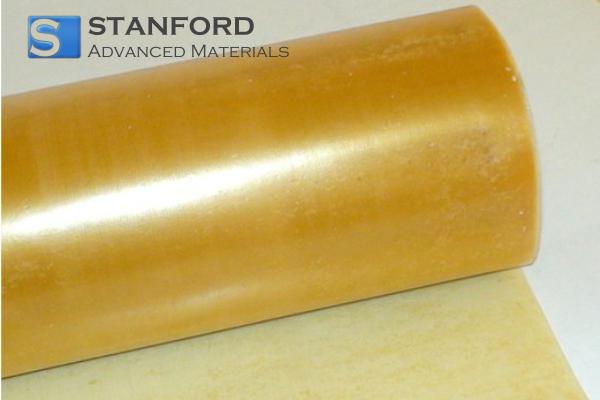ASTM E29: Using Digits In Test Data
Description
ASTM E29 is a widely used standard that provides guidance on the application of significant digits in reporting and interpreting test data to ascertain compliance with specifications. The practice ensures consistency, clarity, and data accuracy in reporting for industries.
Purpose and Scope
Purpose: To supply a systematic technique for applying significant digits in test data so that users can ascertain whether a product or material complies with specified requirements.
Scope: This standard can be applied to all numerical values derived from test data, such as engineering, manufacturing, and quality assurance uses.
Key Concepts of ASTM E29
1. Significant Digits
Significant figures are significant figures in a number that determine its precision.
The standard instructs that values reported should reflect the precision of the test method used to determine it.
2. Rounding Rules
ASTM E29 defines some rules for rounding numbers:
If the first digit to be dropped is less than 5, retain the last digit.
If the first digit to be dropped is greater than 5, increase the last digit by one.
If the first digit to be dropped is precisely 5, round to the nearest even number (to avoid rounding bias).
For example:
2.344 rounded to two significant figures is 2.34.
2.355 to two significant figures is 2.36 (since 5 is preceded by an odd number, the previous digit is rounded up).
3. Test Data and Specification Limits
The standard advises on:
Comparison of test data and specification limits by ensuring that both are expressed to the same number of significant figures.
Prevention of excessively precise comparison, which can mislead about the precision of the results obtained from tests.
For example:
If a test value equals 99.7 and the spec limit is 100, the test cannot be rejected if the test method precision cannot accommodate a closer comparison (e.g., 99.7001 and 100.0000).
4. Conformance Determination
Conformance decisions have to consider both the precision of the test method and the specification precision.
ASTM E29 avoids misunderstandings by requiring that specifications and test values agree on significant digits.
For more information, please see Stanford Advanced Materials (SAM).
Applications
Quality Assurance:
ASTM E29 is used by manufacturers to ensure that test data supplied by laboratories are in agreement with specified tolerances for materials or products.
Data Reporting:
Standardises presentation of test results in technical reports and certifications to prevent misinterpretation due to different rounds or excessive precision.
Engineering and Design:
Makes design tolerances realistic and measurable based on the test methods employed to verify them.
Regulatory Compliance:
Helps companies to demonstrate compliance with industry standards by providing standardised criteria for data evaluation.
Examples of Application
Material Strength Testing:
The yield strength is tested on a sample of steel and found to be 400.7 MPa. When 400 MPa is the minimum requirement, rounding criteria guarantee that the test result complies with the specification.
Dimensional Tolerances
A measurement is taken on a dimension of a part to be 25.48 mm using a caliper with ±0.01 mm accuracy. In comparison with the 25.5 mm specification, ASTM E29 guarantees proper interpretation of the measurement.
Frequently Asked Questions
What is the meaning of ASTM E29?
ASTM E29 ensures consistency and accuracy in reporting test data with clear instructions on the use of significant digits and rounding procedures. ASTM E29 helps to align the test data with the specification limits to minimise conflict and misinterpretation in quality assurance and compliance processes.
How does ASTM E29 round when the digit is exactly 5?
If the digit to be dropped is exactly 5, rounding to the nearest even number is required by ASTM E29. For example:
2.355 rounds to 2.36 (because 5 is preceded by an odd digit, the preceding digit is increased).
2.345 rounds to 2.34 (because 5 is preceded by an even digit, the preceding digit is not altered).
The above rule avoids bias in rounding many results.
How is significant digits connected with test method precision?
The number of meaningful digits that can be reported in test results depends on the test method's precision. Over-reporting (i.e., reporting more than the method warrants) will inaccurately suggest greater accuracy for the data, while under-reporting may be discarding valuable information.
Is ASTM E29 applicable to all industries and testing types?
Yes, ASTM E29 is applicable to any testing procedure or sector where numerical values are used to judge compliance with specifications. This includes applications within manufacturing, construction, environmental testing, and materials science.
In what way does ASTM E29 assist with decisions on conformance?
By both test values and specification limits being given in the same number of significant digits, ASTM E29 eliminates variability caused by differential precision. The standard provides a clear and impartial method for ascertaining whether a material or a product complies with the required specifications.

 Bars
Bars
 Beads & Spheres
Beads & Spheres
 Bolts & Nuts
Bolts & Nuts
 Crucibles
Crucibles
 Discs
Discs
 Fibers & Fabrics
Fibers & Fabrics
 Films
Films
 Flake
Flake
 Foams
Foams
 Foil
Foil
 Granules
Granules
 Honeycombs
Honeycombs
 Ink
Ink
 Laminate
Laminate
 Lumps
Lumps
 Meshes
Meshes
 Metallised Film
Metallised Film
 Plate
Plate
 Powders
Powders
 Rod
Rod
 Sheets
Sheets
 Single Crystals
Single Crystals
 Sputtering Target
Sputtering Target
 Tubes
Tubes
 Washer
Washer
 Wires
Wires
 Converters & Calculators
Converters & Calculators
 Write for Us
Write for Us




 Chin Trento
Chin Trento



